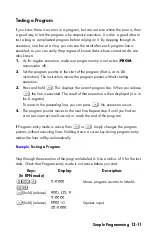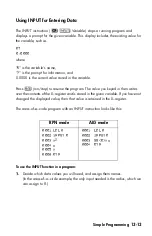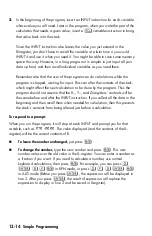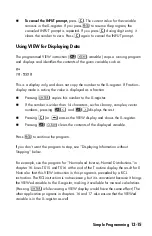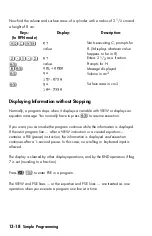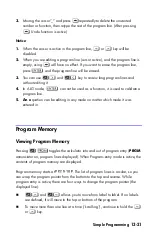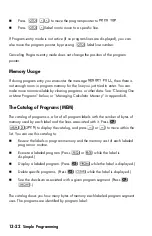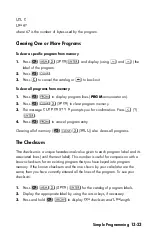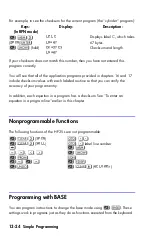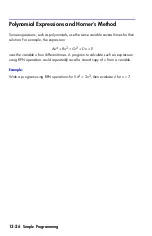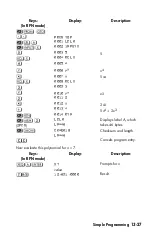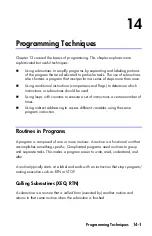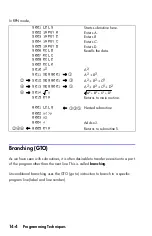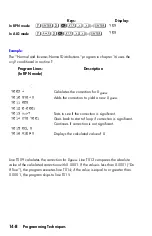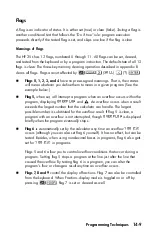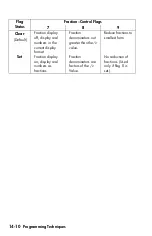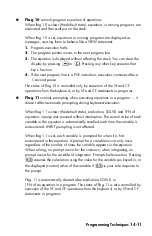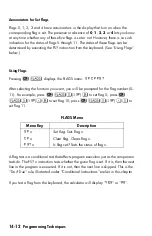
13-25
This allows you to write programs that accept numbers in any of the four bases, do
arithmetic in any base, and display results in any base.
When writing programs that use numbers in a base other than 10, set the base
mode both as the current setting for the calculator and in the program (as an
instruction).
Selecting a Base Mode in a Program
Insert a BIN, OCT, or HEX instruction into the beginning of the program. You should
usually include a DEC instruction at the end of the program so that the calculator's
setting will revert to Decimal mode when the program is done.
An instruction in a program to change the base mode will determine how input is
interpreted and how output looks
during and after program execution,
but it does
not
affect the program lines as you enter them.
Numbers Entered in Program Lines
Before starting program entry, set the base mode. The current setting for the base
mode determines the result of program.
An annunciator tells you which base is the current setting. Compare the program
lines below in the decimal and non-decimal mode. All decimal and non-decimal
numbers are left–justified in the calculator's display.
Decimal mode set:
Binary mode set:
:
:
:
:
PRGM
PRGM BIN
Decimal number
can omit the sign
“d”
Binary number
should add the
base sign ”b”
:
:
:
:
Summary of Contents for 35s
Page 1: ...HP 35s scientific calculator user s guide H Edition 1 HP part number F2215AA 90001 ...
Page 14: ...12 Contents ...
Page 15: ...Part 1 Basic Operation ...
Page 16: ......
Page 46: ...1 30 Getting Started ...
Page 63: ...RPN The Automatic Memory Stack 2 17 A Solution ...
Page 64: ...2 18 RPN The Automatic Memory Stack ...
Page 74: ...3 10 Storing Data into Variables ...
Page 180: ...12 14 Statistical Operations ...
Page 181: ...Part 2 Programming ...
Page 182: ......
Page 246: ...15 12 Solving and Integrating Programs ...
Page 270: ...16 24 Statistics Programs ...
Page 284: ...17 14 Miscellaneous Programs and Equations ...
Page 285: ...Part 3 Appendixes and Reference ...
Page 286: ......
Page 308: ...B 8 User Memory and the Stack ...
Page 322: ...C 14 ALG Summary ...
Page 336: ...D 14 More about Solving ...
Page 346: ...E 10 More about Integration ...
Page 352: ...F 6 Messages ...
Page 370: ...G 18 Operation Index ...
Page 382: ...Index 12 ...

